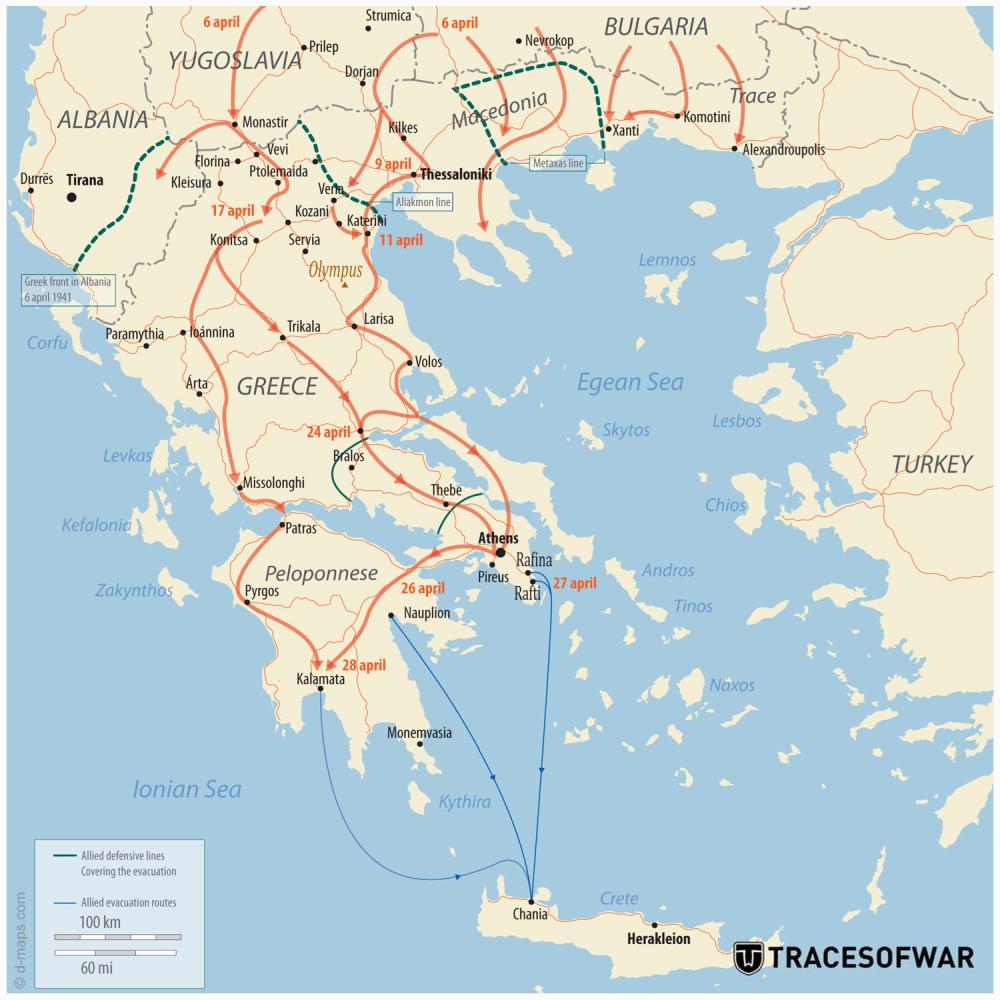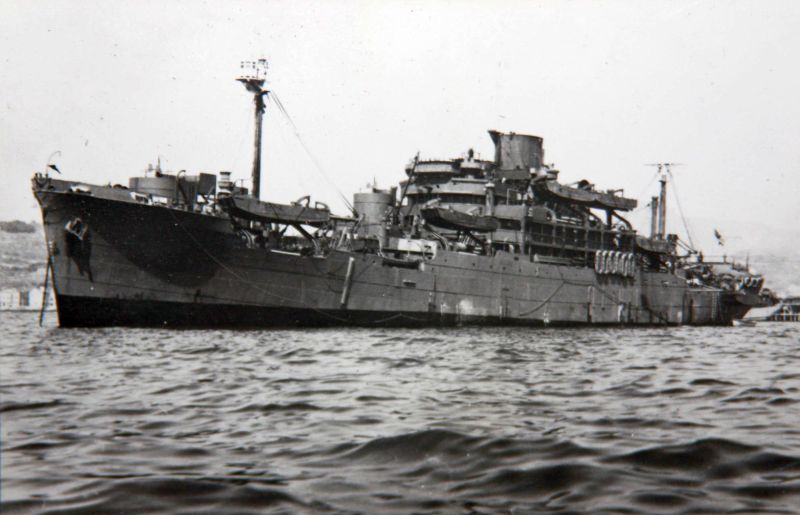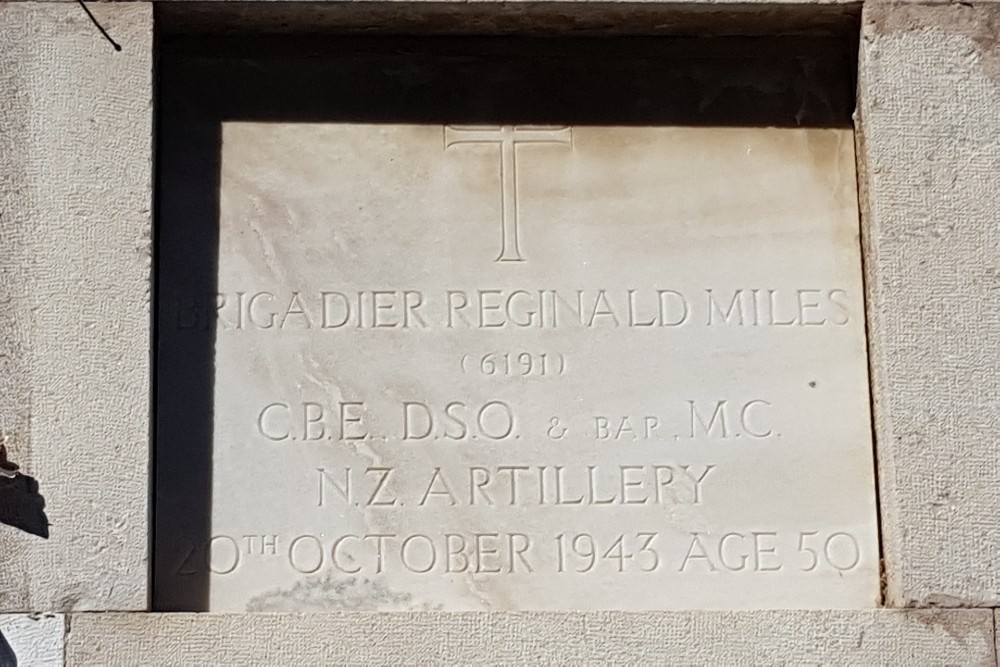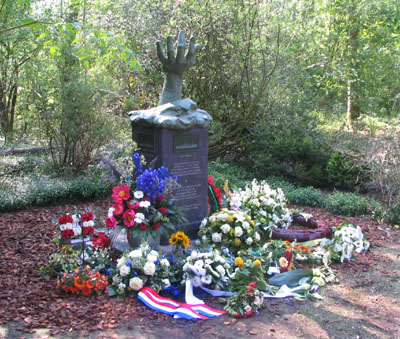Preface
From 24 April till 1 May 1941, over 50,000 troops of the British Expeditionary Forces were evacuated from Greece. Next to a large number of warships, nine troop-ships were involved in this exercise, including three of them of Dutch origin. All three Dutch vessels were sunk whilst the destruction of ss Slamat became the largest disaster at sea in Dutch history.
End 1940 the Italian dictator Benito Mussolini made an effort to step out of the shade of his ally Adolf Hitler by invading Greece. With this, in his eyes easy target, Mussolini wanted to show off with his conquest to what he and Italy were militarily capable of. On the 28th of October, 1940, Italian troops invaded Greece from the earlier conquered Albania. The Greeks however appeared to be tough opposition and the Italians did not succeed in breaking through their defense lines. Within three weeks the Greeks had been able to stop the Italian advance and started the counter attack, which pushed the Italians back across the Albanian border. The Italians called in reinforcements, but on 9 March, 1941, a large counter attack at the Greeks again came to nothing. After a week Mussolini called his troops back and the Greek-Italian War was finished.
In the meantime the German strategy, had already since the beginning of the war, been aimed at removing the Brits from the Mediterranean area. The conquest of Yugoslavia and Greece therefore fitted the German strategic thinking. Herewith the Axis-Powers would make the connection with the German troops in North Africa, who were advancing in the direction of Egypt and Palestine, both being British protectorates. Especially for this reason but also in order to relieve allied Italy, Hitler had decided in November 1940 to invade Greece. From that time German troops regularly had made sorties from Bulgaria and Rumania towards cities in North-Greece. On April the 6th, 1941, the Germans, together with their allies Italy and Bulgaria, launched a massive attack on Yugoslavia and Greece. Ten days later Yugoslavia already had to give in to the German Blitzkrieg and the Balkan country capitulated. On 23 April the Greeks were obliged to do the same.
On request from Greece, but also because of their own interest, the British sent a 60,000 strong Imperial Expeditionary Force to Greece under the code name Operation Lustre. The operation started on the 2nd of March 1941 when the first British, Australian, New Zealander, Palestinian and Cypriote troops boarded in Alexandria, Egypt. On March 26th the first British imperial troops disembarked in Piraeus, the harbor of Athens, and moved to the north. From April the 6th onwards however it appeared quite quickly that the combined Greek and British armies were no match for the Germans. This not only was the result of the 360,000 strong allied armies being numerically in a vast minority compared to the 680,000 German and 565,000 Italian forces, but mainly because the Luftwaffe was lord and master in that region. On 21 April the British government agreed to the proposition of the commander of the British Expeditionary Force, Lieutenant-General Sir Henry Maitland Wilson, to evacuate the troops from Greece. This operation was code named Demon.
Already during the first night of the German offensive, from 6 to 7 April, the Luftwaffe had carried out heavy aerial attacks on Piraeus. That is how the British ammunition carrier Clan Fraser had exploded, but as a consequence of the extreme explosion, not less than 13 other ships had also been sunk. Even worse however was the total destruction of the seaport facilities of Athens’s harbor city. This prevented Operation Demon from being carried out from this important port and the British became dependent on smaller harbors like Rafina and Porto Raffi east of Piraeus, Megra west of Athens and Nauplia (Nafplion), Monemvasia and Kalamata on the Peloponnesus peninsula. Because the Luftwaffe did not meet any resistance of significance the allies had to start from the presumption that the German aircraft would have a free play at bombarding the evacuation convoys. Therefor the darkness was their only ally during Operation Demon.
Definitielijst
- Blitzkrieg
- The meaning of this word is “Lightning War”. Short and fast campaign. As opposed to a trench war the Blitzkrieg is very quick and agile. Air force and ground forces work closely together. First used against the Germans (September 1939 in Poland.
- Luftwaffe
- German air force.
- offensive
- Attack on a smaller or larger scale.
- resistance
- Resistance against the enemy. Often also with armed resources.
- strategy
- Art of warfare, the way in which war should be conducted in general.
Images
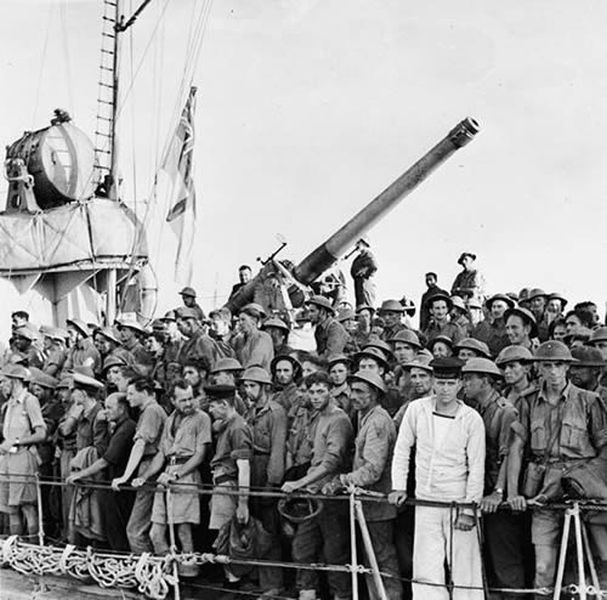 British soldiers are evacuated on board a warship during Operation Demon. Source: Kiwi Veterans.
British soldiers are evacuated on board a warship during Operation Demon. Source: Kiwi Veterans.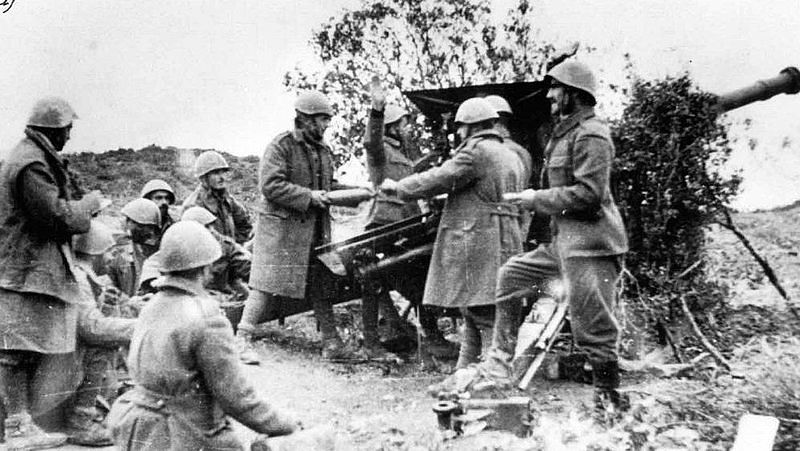 Greek artillery fighting Italian troops. Source: Desert War.
Greek artillery fighting Italian troops. Source: Desert War.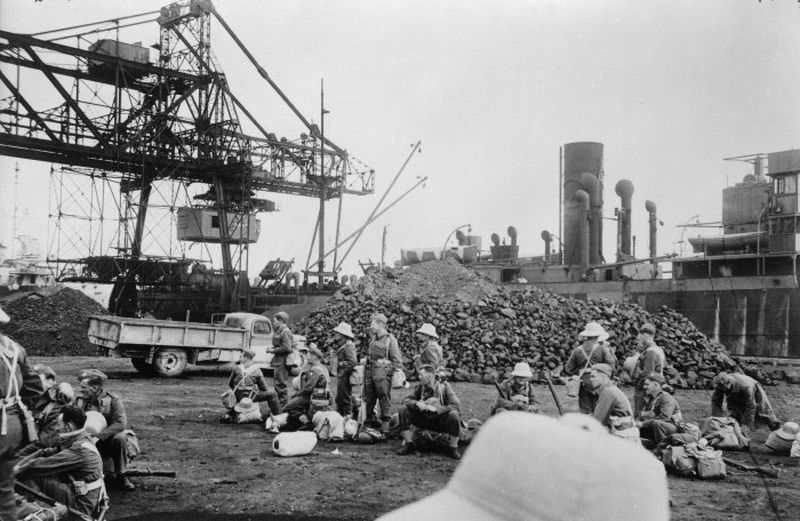 New-Zealand troops arrive in Piraeus, early april 1941. Source: Kiwi Veterans.
New-Zealand troops arrive in Piraeus, early april 1941. Source: Kiwi Veterans.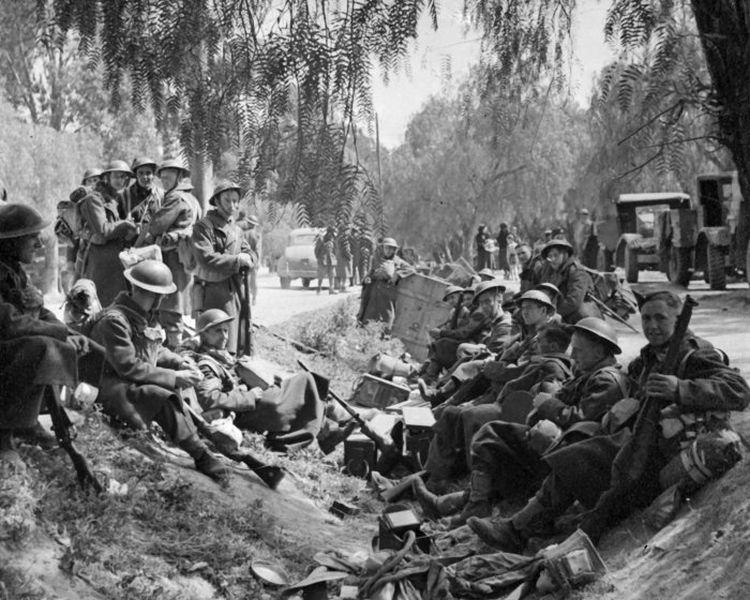 New-Zealand troops retreating in Greece are having a break. Source: Kiwi Veterans.
New-Zealand troops retreating in Greece are having a break. Source: Kiwi Veterans.First evacuations an sinking of ss Pennland
On 25 April, 1941, the British Vice Admiral Henry D. Pridham-Wippell, deputy commander of the British Mediterranean fleet, arrived aboard the cruiser HMS Orion at the British naval base of Crete, at Ormos Soudas, the Bay of Souda at the north coast of Crete near Chania. This flag-officer was charged with all operations of the British naval forces in the region, so also with Operation Demon. To accomplish this, he had the availability of cruisers HMS Orion, HMS Ajax, HMS Phoebe and HMAS Perth, the anti-aircraft cruisers HMS Calcutta, HMS Coventry and HMS Carlisle, twenty destroyers, three gunships, the Landing Ships Infantry (LSI) HMS Glengyle and HMS Glenearn equipped with landing craft, four smaller Landing Ships Tank (LST), a number of smaller vessels amongst which some Flower-class corvettes and nine troop-ships.
The first evacuations of the British Expeditionary Force started in the night of 24 to 25 April from Porto Rafti, Megara and Nauplia. The first convoy, destined to Porto Rafti consisted of HMS Glengyle (8,986 ton), the anti-aircraft cruiser HMS Calcutta and the corvette HMS Salvia. In the deep darkness the ships succeeded in embarking 5,700 men, who were delivered safely to the Bay of Souda. In the evening of 24 April the motor freighter Thurland Castle (6,732 ton) arrived in Megara. During the nightly hours the ship took 3,500 troops onboard, of whom 1,000 wounded and 100 nurses. Towards 03:00 the ship was already on her way to Crete, but was attacked several times during the trip by German bombers. Because of a number of near-misses two holds were flooding but there were no victims.
The convoy destined to Nauplia consisted of LSI HMS Glenearn of 8,986 tons and the passenger ship ms Ulster Prince of 3,791 tons. These ships were protected by the light cruiser HMS Phoebe, the corvette HMS Hyacinth and the Australian destroyers HMAS Stuart and HMAS Voyager. However, this convoy already at her outward bound trip met with great difficulties. The Glenearn was damaged by air attacks and had to stop its engines in order to extinguish the fire which had started. In spite thereof the ship arrived in time to take 5,100 men onboard. The loss of the Ulster Prince was much more serious. The ship had run aground in the narrow harbor entrance and could not be refloated any more by tugging. The accompanying war ships took over the refugees. The Phoebe took aboard 1,130 men, the Voyager 340 and the Hyacinth 113. They all arrived safely in Crete. The Ulster Prince was bombed the next day by German planes and burned out completely.
The three-prop steam passenger ship Pennland, which had been built in 1922 by Harland & Wolff, before the war, sailed together with ss Westernland in service of the Red Star Linie of German ship-owners Bernstein between Antwerp and New York. The Holland Amerika Lijn (HAL) acquired both ships in the spring of 1939 in order to continue the connection between Belgium and the United States under Dutch flag. In May 1940 ss Pennland (16,381 ton) was berthed in New York. The ship, powered by three triple expansion steam engines, was chartered by the British Ministry of Shipping (later on the British Ministry of War Transport) and equipped in Liverpool for troop transport. Thereafter the ship took part in the failed attack of the Free French and British forces on Dakar, capital city of the French colony Senegal, in September 1940. Thereafter the Pennland made a few single trips with troops across the Atlantic as well as a trip with 640 German and Italian prisoners of war from the British and French colonies to Jamaica. Following that the troop-ship was directed towards Suez where she arrived via South Africa in March 1941 with 2,500 British troops from England. During Operation Lustre the Pennland carried Australian and British soldiers from Port-Said and Alexandria to Greece.
On 23 April ss Pennland was directed from Alexandria to Megara under the command of Captain J. van Dulken in order to participate in Operation Demon. From Crete the repaired Thurland Castle joined the convoy. On April 25th , near the isle of Agios Georgios in the Gulf of Athens the Pennland being the largest ship of the convoy was attacked by a Junker 88 bomber. The Dutch vessel received a direct hit on its anchor winch which caused immense damage to the bridge and the steering house. The compasses, engine telegraphs and the steering equipment were totally destroyed. Furthermore a near-miss created a large hole in the ships’ plating which caused the hold in front of the bridge to flood. The engine installation however was still intact which made captain Van Dulken decide to return to Crete for repairs On the way it appeared that the hold just behind the bridge also started to make water.
To make things worse the Pennland was attacked again by a German bomber. This time the Dutch ship received a direct hit on the starboard boat-deck. The bomb penetrated all decks and exploded in the engine room. Four deaths were to be mourned and the engine room was totally destroyed. Next to that another large hole was blown in the side. This prompted captain Van Dulken to issue the order abandon ship. The 303 crew were transferred to the accompanying destroyer HMS Griffin who tried to sink the Pennland with cannon fire. A few hours later German aircraft finished the job and sank the wreck of the Pennland. The crew was safely put ashore on Crete.
Definitielijst
- cannon
- Also known as gun. Often used to indicate different types of artillery.
- cruiser
- A fast warship with 8,000 – 15,000 ton displacement, capable to perform multiple tasks such as reconnaissance, anti-aircraft defence and convoy protection.
- destroyer
- Very light, fast and agile warship, intended to destroy large enemy ships by surprise attack and eliminating them by using torpedoes.
- Infantry
- Foot soldiers of a given army.
- Junker
- “Junger Herr”. Young master, young lord. German nobility and/or land owners. A great deal of influence in the army and in politics.
Images
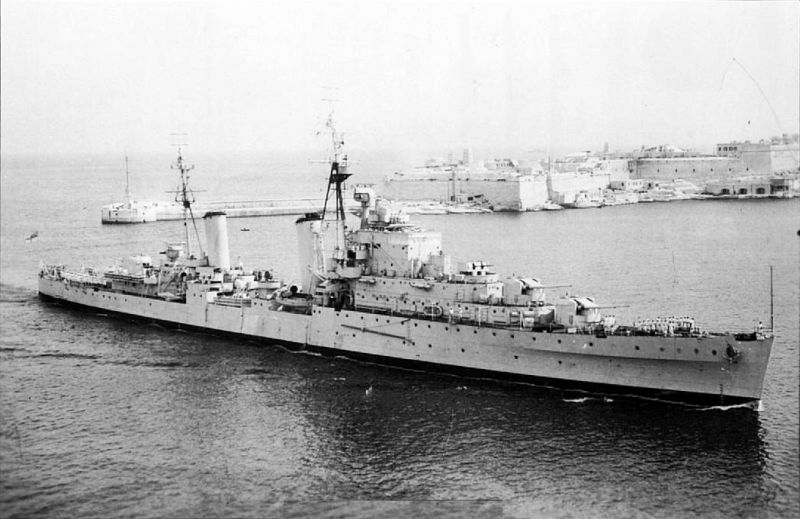 Dido-class light cruiser HMS Phoebe was part of Vice-Admiral Henry D. Pridham-Wippell`s fleet. Source: Wikipedia.
Dido-class light cruiser HMS Phoebe was part of Vice-Admiral Henry D. Pridham-Wippell`s fleet. Source: Wikipedia.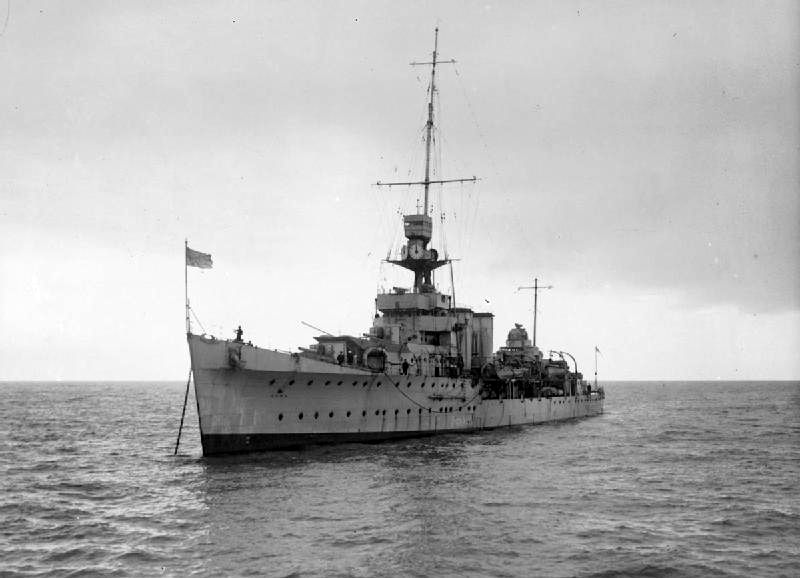 Cape Town-class cruiser HMS Calcutta. Source: Wikipedia.
Cape Town-class cruiser HMS Calcutta. Source: Wikipedia.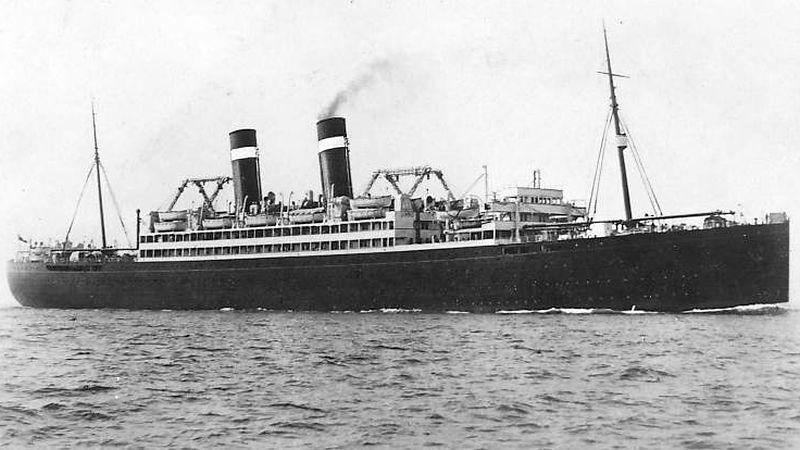 Three-prop steam passenger ship Pennland. Source: Delcampe.
Three-prop steam passenger ship Pennland. Source: Delcampe.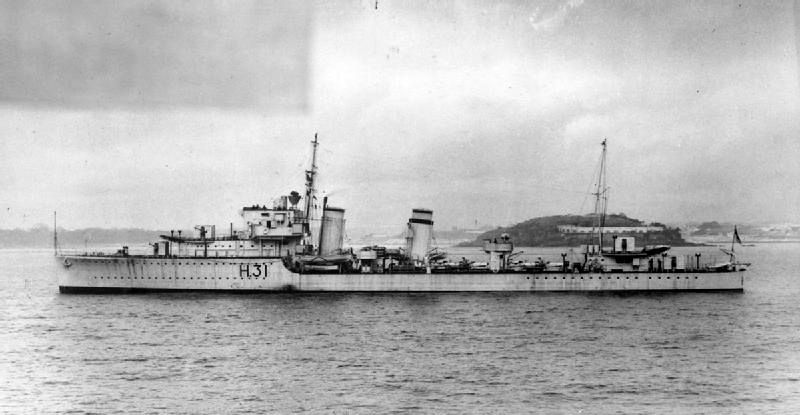 British destroyer HMS Griffin (H-31) took ss Pennland`s survivors on board. Source: Wikipedia.
British destroyer HMS Griffin (H-31) took ss Pennland`s survivors on board. Source: Wikipedia.Disaster with ss Slamat, HMS Diamond and HMS Wryneck
Ss Slamat was a twin-prop ship of 11,636 tons of the Rotterdamsche Lloyd. The vessel was launched in 1924 by shipyard De Schelde in Flushing in order to serve the connection Rotterdam – Dutch East Indies. In order to face the competition with the ever faster, newer ships Slamat was modernized in 1931. The vessel was enlarged to a total length of 155.5 meters , by adjusting the bow and by doing so the steam turbines, delivered and constructed by De Schelde, generated a max speed up to 17 instead of 15 knots. In 1940 the ship was chartered by the British Ministry of Shipping and converted into a troop-ship in Sydney, Australia. Up till the beginning of 1941 the troop-ship was mainly deployed in the Indian Ocean and Mediterranean Sea to carry troops of the British Empire to Egypt.
In the afternoon of 26 April, 1941, Slamat, HMS Glenearn and Khedive Ismail of 7,290 ton (under Egyptian flag) escorted by cruiser HMS Calcutta and five destroyers were directed towards Nauplia. Half way however Glenearn was hit twice by a German bomb one of which hit the engine room. This stopped the LSI. Destroyer HMS Griffin was ordered to tow the landing ship back to Crete. The exclusion of the Glenearn was a bitter set back; not only because of the lacking of the ships’ capacity , but especially because of the loss of the carried landing craft which would have enhanced the boarding of the troops significantly.
In the evening the ships dropped anchor in the bay at Nauplia. As the access to the harbor was still blocked by the wreck of the Ulster Prince and because of the lacking of the landing craft of the LSI the troops to be evacuated could only be boarding by being ferried in the life-boats of the ships themselves and some local small boats. The cruisers HMS Orion and HMS Perth and the destroyer HMS Stuart who had speedily replaced HMS Glenearn, took the first 2,500 troops aboard. The Khedive Ismail at 03:00 had boarded no refugees at all and Slamat only a few hundred, when HMS Calcutta signaled that departure was due. Captain T. Luidinga of the Slamat understood that hundreds of evacuees had to remain behind on shore and against orders he continued to embark troops. HMS Calcutta and the Egyptian ship therefore departed only at 04:00 and Slamat herself only at 04:15. In spite of the decision by captain Luidinga to board more troops, at that moment there were about 600 troops onboard of the steamer, only half of her capacity.
After a few hours the allied fleet was attacked in the Sea of Pelagos by nine German Ju 88 bombers. That is when Slamat received a direct hit between the bridge and the foremost chimney which caused a fierce blaze. The crew tried to control the fire but this was made even more difficult by the heavy machine gun strafing by Messerschmitt Bf 109 fighter airplanes and Ju 87 (Stuka) bombers. Next to that, the ship received another near-miss which started her to list. Captain Luidinga issued the abandon-ship order. The life boats and rafts which had been left over did not provide sufficient capacity and two life-boats capsized as they were overcrowded. To make things worse the drowning troops were machine gunned in the water by the German airplanes whilst the other ships maintained heading and speed. HMS Calcutta took over a few survivors and ordered destroyer HMS Diamond to stay and rescue as many shipwrecked people as possible.
At 09:16 three British destroyers from Crete arrived to reinforce the convoy. One of these ships, HMS Wryneck, got the order to assist HMS Diamond. Both destroyers rescued as many drowning men as possible and returned at 11:00 to the burning Slamat. Here they discovered another two life-boats and they took the survivors aboard. HMS Wryneck fired a torpedo at the Slamat which sank her within minutes. HMS Diamond already had about 600 victims onboard and HMS Wryneck another few dozen when both destroyers at 13:00 headed for Crete. A quarter of an hour later both ships were surprise-attacked by Ju87 dive bombers coming out of the sun. HMS Diamond received two hits and sank within eight minutes. HMS Wryneck received three hits, capsized over port and sank within fifteen minutes. The crew of the Wryneck had been able to lower one single life-boat and both destroyers had launched their three Carley rafts. The capacity of these seven items of safety equipment however was dramatically short and hundreds drowned, especially those who were wounded.
In the evening of 27 April the destroyer HMS Griffin was sent out to establish why HMS Diamond and HMS Wryneck had failed to return. Instead of two destroyers Griffin found two rafts at the spot where Slamat had sunk. Fourteen survivors were picked up and next morning another four, who were taken to Crete. The life-boat of HMS Wryneck reached a little rocky island at thirteen miles south east of Milos on the 28th of April. Here they found a Greek fishing boat full up with Greek and British refugees from Piraeus. That evening both the fisherman and the life-boat sailed for Crete and were spotted during the night by a landing craft on its way with refugees from Port Raphtis. All evacuees were taken onboard of the landing craft and arrived safely at Crete. In the disaster with the Slamat, HMS Diamond and HMS Wryneck almost 1,000 people perished. Of the almost 600 refugees onboard Slamat only eight survived. Of the 214 crew of the Slamat, including the 21 Australian and New-Zealander artillerists eleven survived. Of the 166 crew of HMS Diamond 20 were saved and of the 106 crew of HMS Wryneck 27 survived.
Definitielijst
- cruiser
- A fast warship with 8,000 – 15,000 ton displacement, capable to perform multiple tasks such as reconnaissance, anti-aircraft defence and convoy protection.
- Destroyer
- Very light, fast and agile warship, intended to destroy large enemy ships by surprise attack and eliminating them by using torpedoes.
- machine gun
- Machine gun, an automatic heavy quick firearm.
- torpedo
- A weapon of war. A cigar shaped body fitted with explosives and a propulsion and control mechanism. Intended to target after launch a nearby enemy ship and disable it by underwater explosion.
Images
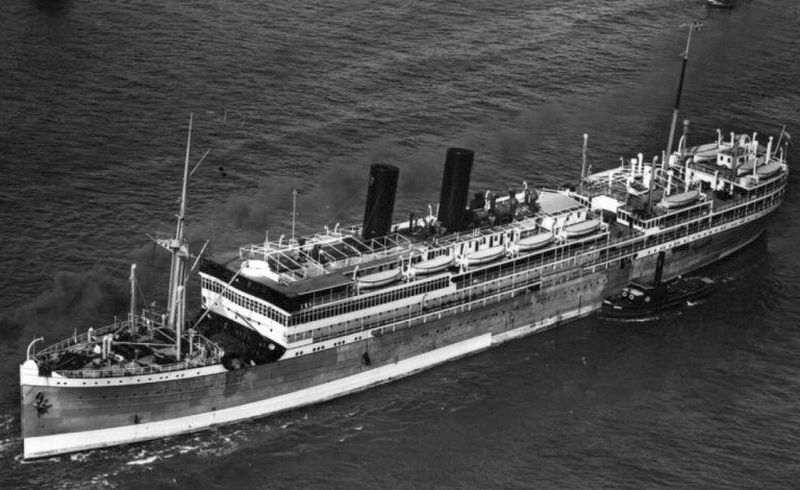 Rotterdamsche Lloyd`s twin-prop ship ss Slamat. Source: Arendnet.
Rotterdamsche Lloyd`s twin-prop ship ss Slamat. Source: Arendnet. LSI HMS Glenearn was hit by German bombs on 26 april 1941 and had to be towed back to Crete. Source: P. Kimenai Go2War2.
LSI HMS Glenearn was hit by German bombs on 26 april 1941 and had to be towed back to Crete. Source: P. Kimenai Go2War2.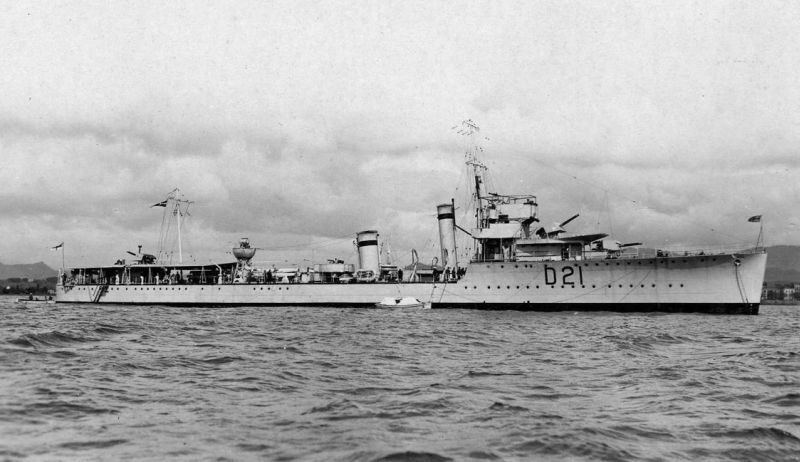 British destroyer HMS Wryneck. Source: Perthone.
British destroyer HMS Wryneck. Source: Perthone. Destroyer HMS Diamond (D-35). Source: World Warships.
Destroyer HMS Diamond (D-35). Source: World Warships.The going down of ss Costa Rica and the rounding off of Operation Demon
The steamship Costa Rica of the KNSM (Koninklijke Nederlandsche Stoomboot Maatschappij) had been delivered to the SMN (Stoomvaart Maatschappij Nederland) named Prinses Juliana. The ship was equipped with two quadruple-expansion steam engines and had a top speed of 14 knots. In September 1930 the vessel was taken over by the KNSM and re-baptized as ss Costa Rica. The ship was modernized and refitted at Wilton’s shipyard in Schiedam, the Netherlands. Displacement after the refitting mounted to 8,672 ton and a luxury passenger accommodation for 254 passengers was installed in the ship. The steamship was converted into a troop-ship in Liverpool between 22 September and 13 December 1940 for the British Ministry of Shipping. In April 1941 ss Costa Rica was deployed for Operation Demon. On the 23rd of April the Costa Rica left Alexandria together with the troop-ships Dilwara (11,080 ton) and the City of London (8,956 ton) and the Thurland Castle to Kalamata on the Peloponnesus peninsula. The ships were escorted by cruisers HMS Calcutta and HMS Coventry, four destroyers and a corvette.
On 26 April the fleet anchored at Kalamata. At midnight the embarkation of the British troops started. Three hours later approximately 3,000 men had boarded the Costa Rica, mainly Australian and New-Zealanders. The other troop-ships took another 5,650 troops on. The convoy left the roads of the port in the south of the Peloponnesus peninsula and headed for Crete. At first daylight the ships were attacked by German dive bombers who did not succeed yet in hitting their targets. The attacks however continued and towards 10:00 ss Costa Rica was hit by two near-misses and seriously damaged on her port side. A large hole was made in her plating and the engine room and hold number 4 started to make water. The destroyer HMS Hero was ordered to tow the ship but Costa Rica made so much water that towing did not make sense anymore. The destroyers HMS Hero, HMS Hereward and HMS Defender took all crew and evacuees of Costa Rica onboard without any incident. Shortly afterwards the Costa Rica disappeared in the waves of the Mediterranean.
That same night 4,527 troops were evacuated from Nauplia while freighter Salween (7,063 ton), accompanied by cruiser HMS Carlisle and destroyers HMS Kandahar and HMS Kingston succeeded in boarding 4,720 men from Porto Rafti. The LSI HMS Glengyle and the destroyers HMS Decoy, HMS Hasty and HMS Nubian successfully evacuated 3,500 men from Raphina.
After the losses of Slamat and Costa Rica Vice-Admiral Pridham-Wipell decided to make no more use of merchant ships for Operation Demon. Therefore cruiser HMS Ajax and destroyers HMS Kimberly and HMS Kingston left during the night of 27 to 28 April to Port Raphti in order to pick up 3,840 men. The destroyer HMS Havock departed on her own to Raphina and collected 800 troops. During the following night cruiser Ajax and destroyers Griffin, Havock, Hotspur and Isis left for Monemvasia where 4,320 men boarded while in Kalamata another 322 soldiers were loaded. The gun-ship HMS Auckland and the corvettes HMS Hyacinth and HMS Salvia headed for the island of Kythira and evacuated 820 military. Thereafter various British smaller war vessels, cruising in the Greek archipelago , succeeded in picking up troops that had stayed behind. In the night of 30 April to 1 May the destroyers HMS Havock and HMS Hotspur collected the remaining 700 British and Palestinian troops from the isle of Milos.
Definitielijst
- cruiser
- A fast warship with 8,000 – 15,000 ton displacement, capable to perform multiple tasks such as reconnaissance, anti-aircraft defence and convoy protection.
- destroyer
- Very light, fast and agile warship, intended to destroy large enemy ships by surprise attack and eliminating them by using torpedoes.
Images
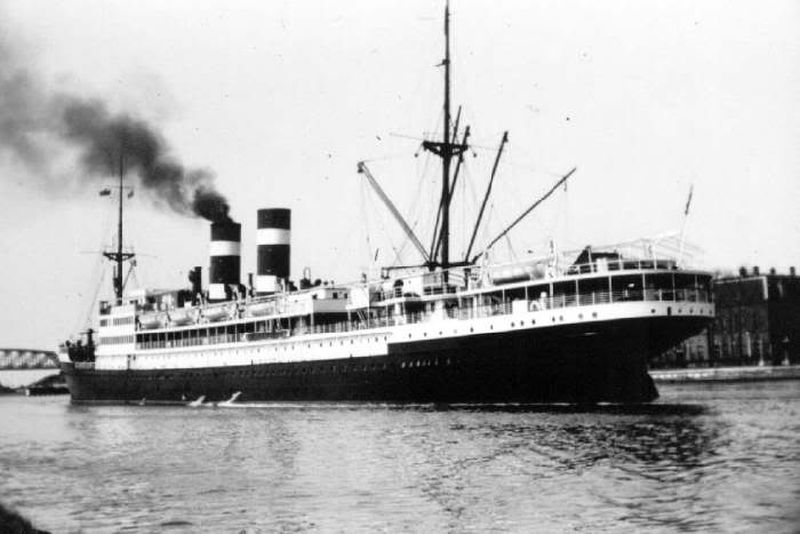 Dutch steam passenger ship Costa Rica of the KNSM. Source: Kombuispraat.
Dutch steam passenger ship Costa Rica of the KNSM. Source: Kombuispraat.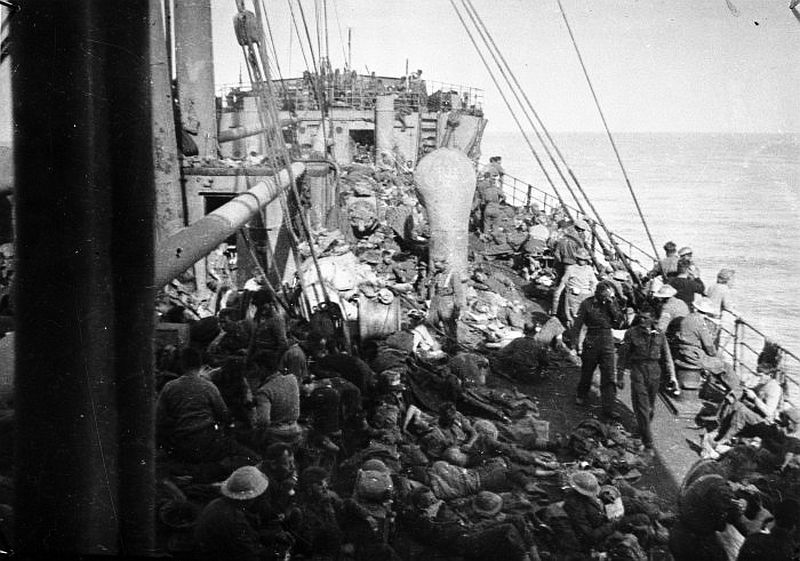 New-Zealand troops on board the cargo vessel Thurland Castle. Source: Kiwi Veterans.
New-Zealand troops on board the cargo vessel Thurland Castle. Source: Kiwi Veterans.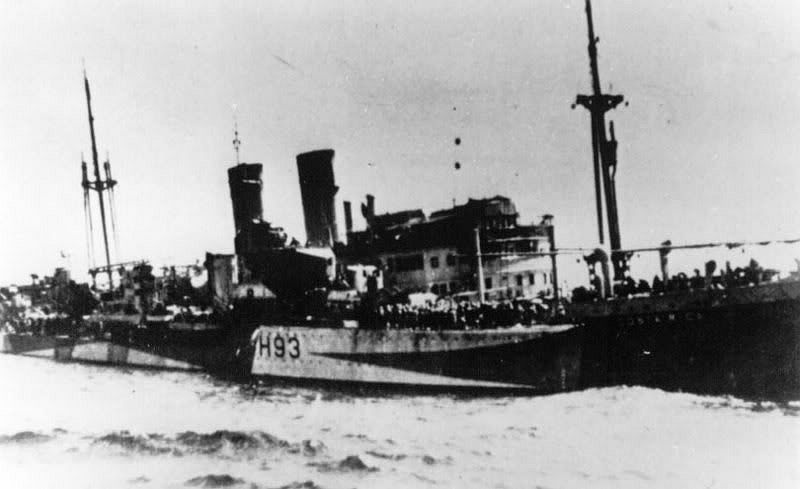 HMS Hereward takes over crew and passengers from ss Costa Rica. Source: Kombuispraat.
HMS Hereward takes over crew and passengers from ss Costa Rica. Source: Kombuispraat.Conclusion
At the start of Operation Demon the British had been looking forward to the evacuation of 50,000 troops of the British Expeditionary Force. Drawing up the balance sheet on May 1st 1941, it appeared that 50,732 troops had been brought home successfully from the main land of Greece and its countless islands. Considering the fact that the evacuations had to take place in darkness, often in rough seas and with the help of rather unreliable maps, a very respectable number. Apart from that, all the time Italian war ships could interfere and attack the rather weakly protected convoys from the port of Taranto, within twelve hours sailing from the Greek ports. The Regia Marina however left the initiatives completely up to the German Luftwaffe, who had practically no resistance at all.
The losses which were suffered in the first days of Operation Demon, the Ulster Prince, Slamat and Costa Rica, were mainly due to the fact that the merchant ships were slow, were only limited in their maneuvering capability and had none or just limited anti-aircraft gunnery available. When this became painfully clear the switch was made to the deployment of war ships who finalized the operation quickly and successfully.
In August 1946 Her Majesty Queen Wilhelmina wrote a letter to the widow of captain Tjalling Luidinga in which she sent her condolences with the dead of her husband. She described her gratefulness for his war efforts and called him "a great son of our seafaring nation". In 2011, 70 years after the disaster with ss Slamat, HMS Diamond and HMS Wryneck, in the Laurens church in Rotterdam a monument was revealed in memory of the perished seamen and imperial troops. All of the names of the perished military are mentioned on a number of head stones of the Commonwealth War Graves Commissions’ Athens Memorial at the Phalaron war cemetery near Palaio Faliro south east of Athens.
Definitielijst
- Commonwealth
- Intergovernmental organisation of independent states in the former British Empire. A bomber crew could include an English pilot, a Welsh navigator, air gunners from Australia or New Zealand. There were also non-commonwealth Poles and Czechs in Bomber Command.
- Luftwaffe
- German air force.
- resistance
- Resistance against the enemy. Often also with armed resources.
Images
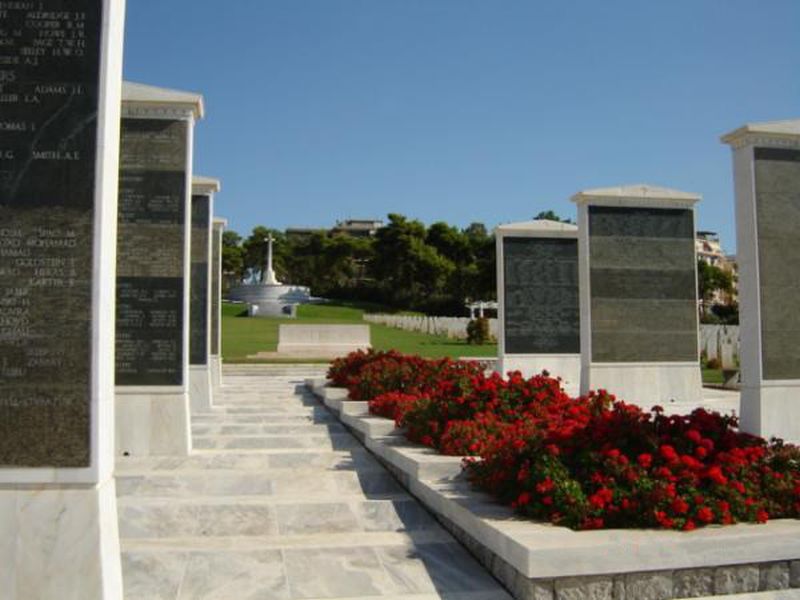 Head stones in memory of the perished imperial troops at the Phalaron war grave near Palaio Faliro. Source: Wikipedia.
Head stones in memory of the perished imperial troops at the Phalaron war grave near Palaio Faliro. Source: Wikipedia.Information
- Article by:
- Peter Kimenai
- Translated by:
- Fred Bolle
- Published on:
- 01-04-2015
- Last edit on:
- 30-09-2024
- Feedback?
- Send it!
Related sights
Sources
- BEZEMER, K.W.L., Geschiedenis van de Nederlandse Koopvaardij in de Tweede Wereldoorlog, Elsevier, Amsterdam, 1986.
- MüNCHING L.L. VON, De Nederlandse koopvaardijvloot in de Tweede Wereldoorlog, De Boer Maritiem, Bussum, 1978.
- www.dutchfleet.net
- www.wrecksite.eu
- www.kiwiveterans.co.nz
- www.ndsm-werfmuseum.nl
- www.wereldoorlog2.com
- www.marhisdata.nl
- www.theshipslist.com
- www.kombuispraat.com
- www.kustvaartforum.com
- www.en.wikipedia.org
- www.helderline.nl
- www.media.iwm.org.uk
- www.stoomvaartmaatschappijnederland.nl
- www.desertwar.net
